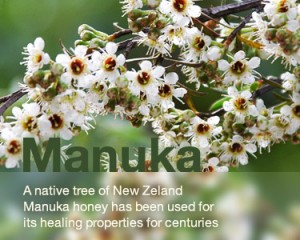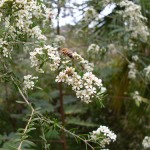Every cell in the body uses oxygen for fuel (as well as glucose). Brain function quickly drops when it is not supplied with adequate oxygen. If it falls too low to quickly, a stroke can occur. Cancers and many pathogenic diseases are destroyed by oxygen, which is why hyperbaric oxygen chambers are used as such powerful life saving tools. These chambers can also reverse all the side effects of a stroke if a person who has just suffered from one is placed into one within an hour or so.
The ratio of oxygen to other molecules in the Earth’s atmosphere has been dropping over several decades. The majority of this problem is due to air pollution increasing and less to the fact that the forests and jungles of the world are being reduced by clear cutting (which should still be stopped). Areas of higher pollution, such as cities, have a lower percentage of oxygen in the air. I hope that these oxygen facts help illustrate the importance of bringing both oxygen producing plants as well as air cleaning plants into your home for life-span development.
Dr. B.C. Wolverton, a former NASA research scientist, helped the agency look into how air purifying plants could be used onboard space missions to benefit the artificial environments onboard their spacecraft.
This NASA Clean Air Study found that oxygen producing plants can be used to both produce oxygen as well as remove common harmful chemicals from the air and break them down into harmless organic byproducts into the soil, which the plants then use as food! These chemicals that are harmful to human health are off-gassed from common household items and products. Some of these items and the chemicals they release are found in synthetic carpets (releases formaldehyde), petroleum products (release benzene), toys, chemical cleaners, paint, furniture with synthetic components and everything else that is synthetic!
All air cleaning plants will of course always produce oxygen, but here are some of the top ones that happen to have a high conversion rate of carbon dioxide (the waste product humans and animals exhale and that plants inhale) to oxygen. The major benefit of adding oxygen producing plants to your living and work space is an increase of productivity due to the maintenance of healthy oxygen levels in the blood.
Top three oxygen producing plants:
#1 Sprouts!:  If you grow your own sprouts for food (especially sweet pea sprouts, buckwheat sprouts and sunflower sprouts) you will have a fantastic mini greenhouse effect in your living space. You also get supplemental oxygen orally by eating raw, living greens! Sprouts are among the strongest oxygen producing plant for the body.
If you grow your own sprouts for food (especially sweet pea sprouts, buckwheat sprouts and sunflower sprouts) you will have a fantastic mini greenhouse effect in your living space. You also get supplemental oxygen orally by eating raw, living greens! Sprouts are among the strongest oxygen producing plant for the body.
#2 Snake Plant a.k.a. Mother-In-Law’s Tongue: 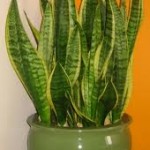 Of all the different oxygen producing plants, this one is unique since it converts a lot of CO2 (carbon dioxide) to O2 (oxygen) at night, making it ideal to have several in your bedroom. 6-8 waist high plants are needed per person to survive if there is no air flow (meaning you could live in a completely air sealed room if you had these plants and the Areca Palms present). The snake plant also removes formaldehyde from the air.
Of all the different oxygen producing plants, this one is unique since it converts a lot of CO2 (carbon dioxide) to O2 (oxygen) at night, making it ideal to have several in your bedroom. 6-8 waist high plants are needed per person to survive if there is no air flow (meaning you could live in a completely air sealed room if you had these plants and the Areca Palms present). The snake plant also removes formaldehyde from the air.
#3 Areca Palm: 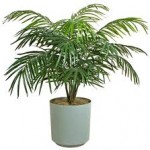 This plant removes xylene and toluene from the air, but also happens to convert a lot of CO2 (carbon dioxide) to O2 (oxygen) during the daytime. Having four (shoulder high plants) of these per person in your household provides enough oxygen to survive on during daylight hours! They need to have dust and grime wiped off of their leaves once a week, or as often as daily if you live in a city with very bad air quality such as Delhi.
This plant removes xylene and toluene from the air, but also happens to convert a lot of CO2 (carbon dioxide) to O2 (oxygen) during the daytime. Having four (shoulder high plants) of these per person in your household provides enough oxygen to survive on during daylight hours! They need to have dust and grime wiped off of their leaves once a week, or as often as daily if you live in a city with very bad air quality such as Delhi.
Top three air cleaning plants:
#1 Madagascar Dragon Tree a.k.a. Red Edged Marginata Dracaena: 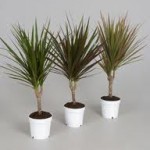 As a popular house plant that needs little attention, it best removes benzene, formaldehyde, xylene and toluene from the air. It cannot tolerate direct sunlight yet it does well in fairly well indirectly lit areas. It is more susceptible to becoming damaged from over watering than infrequent watering.
As a popular house plant that needs little attention, it best removes benzene, formaldehyde, xylene and toluene from the air. It cannot tolerate direct sunlight yet it does well in fairly well indirectly lit areas. It is more susceptible to becoming damaged from over watering than infrequent watering.
#2 Warneck Dracaena: 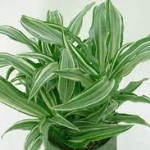 One of the most popular clean air plants, this one removes benzene, trichloroethylene, xylene and toluene from the air.
One of the most popular clean air plants, this one removes benzene, trichloroethylene, xylene and toluene from the air.
#3 Peace Lily: 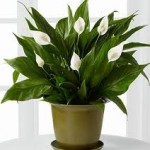 This species (of which there are a variety of sub-species) thrives best in the shade and with only roughly one watering per week (must be chlorine free water) but never let the soil completely dry out. This easy to take care of house plant removes benzene, formaldehyde, acetone, amonia and trichloroethylene from the air. It also periodically flowers!
This species (of which there are a variety of sub-species) thrives best in the shade and with only roughly one watering per week (must be chlorine free water) but never let the soil completely dry out. This easy to take care of house plant removes benzene, formaldehyde, acetone, amonia and trichloroethylene from the air. It also periodically flowers!
The exact number of oxygen producing plants you’ll need in your home is going to vary depending on:
~How much time you spend in your home
~whether you live in a city (there is a wide range of air quality in the various cities around the world) or the countryside
~whether or not there are trees around your home, how much time you have the windows in your home open (is it too cold in the winter?)
~The number of people living in your home
~The number of synthetic products and furnishings in your home.
The NASA clean air study recommended 15-18 good sized oxygen producing plants and air cleaning plants for an 1,800 square foot house. Of course that would be an average and you should take into account the various factors mentioned above to decide whether you require more clean air plants than this. According to Kamal Meattle during his TED talk, he recommends at least 10 plants (a variety of night and day oxygen producing plants as well as air purifying plants) per person if the environment is in a city with very poor air quality. Of course, it’s best to start with just a few oxygen producing plants in your home and increasing the number over time.
Clean air plants have varying needs.
The ones I have listed above are fairly low maintenance. There are many other oxygen producing plants that can make a beneficial addition to your home, just always take into account the amount of work that they require to maintain their health. You’ll want do to the following things with your plants:
~Avoid placing them in corners with stagnant or no air flow or by radiators that produce excessive heat which can damage them.
~Indirect sunlight is best for the air cleaning plants mentioned (because they are mostly shade growing jungle plants) but other types of flowering plants will usually need some direct sun.
~Take them outdoors at least every couple of months for a day or two.
~Clean or dust their leaves about once a week, more often in a dirty city.
~Over-watering is more harmful than under-watering, allow the soil to get fairly dry between waterings (except for the peace lily and your sprouts).
~Mist the leaves since these are jungle plants that like humidity.
~Use an organic fertilizer on occasion such as diluted ocean water, seaweed extract and/or pour the soak water into the soil of your plants left over after germinating your nuts, seeds, grains, legumes and sprouting seeds.
The biggest benefit to incorporating these oxygen-producing plants into your longevity lifestyle is going to be the improvement of air quality in your home.
But another side benefit is going to be the therapeutic effect of having more greenery around you. The color green has a soothing, healing effect and considering that it is the predominant color in nature, people have a natural inclination to feel the most at ease in settings that contain this color. It is one of the great ways to deal with stress.
When detoxing your body, approximately 70% of it occurs through breathing, 20% through perspiration, 8% through urination and 2% through the bowels. I hope you can now understand the utmost importance of having clean air in your home! You will really begin to feel the benefits of these air purifying plants when you engage in diaphragmatic breathing exercises on a regular basis. In a stuffy, poorly ventilated building, people generally breath improperly because the air is so toxic. When the air is vibrant and full of life-force energy, you naturally want to take big deep breaths all the time.
Another useful addition to these clean air plants is to have several room air purifiers that are also negative ion generators. This will create a micro climate in your home that rivals that of even some natural settings! Once optimal air quality in your home is reached, you will be shocked at how suffocating the air is in most buildings and homes, especially during colder months when no one has their windows open. Encourage others to take up this practice (people who visit you often will) and help society get back in touch with the life promoting, natural world :)
Even in huge, busy cities, outdoor air is cleaner and preferable to indoor air. Why is that? One reason is that trees and plants are constantly cleaning the air outside. This suggests that the eco-minded homeowner or office dweller should go out and buy some plants – but which ones? With all the hype of “going green”, every plant on the market is being promoted as an air purifier!
The Lady Palm


(Images via Livick’s Palms, TyTy)
NASA Purifying Score: 8.5
Neck and neck with the Areca palm tree for NASA’s top-ranked air purifying plant is the Lady palm (or Rhapis excelsa.) A versatile plant, the lady can be kept in dry or humid climates (anywhere from 20-100 degrees Fahrenheit) and is fiercely resistant to most types of plant insects.
The Bamboo Palm


(Images via Blue Moon Candles, Plant Importers)
NASA Purifying Score: 8.4
Just a notch below the top 2 air purifying palms is the Bamboo palm (or Chamaedorea seifrizii.) Featured prominently in CasaSugar.com’s “Plants That Purify” series, the Bamboo palm thrives when kept moist (but not wet) in indirect sunlight. Provided these conditions are kept stable, the Bamboo palm can be counted on to purify the indoor air of anywhere you happen to be.
The Rubber Plant


(Image via HowStuffWorks, Great House Plants)
NASA Purifying Score: 8.0
On NASA’s scoring is the rubber plant (or Ficus robusta.) According to AvianWeb, rubber plants excel at removing chemical toxins (especially formaldehyde) from indoor air, requiring less light than many other plants and outperforming all other ficuses. A word of caution, though: rubber plant leaves can be toxic, so be mindful of that if you have pets roaming around!
English Ivy


(Images via Overstock, OSU)
NASA Purifying Score: 7.8
If the air where you live has gotten stale and dry, English ivy (or Hedera helix) might be just the ticket! WebMD describes the effervescent plant as “a fix for allergies“, noting that 60% of airborne mold in the room vanished just 6 hours after English ivy was brought in. Ditto for 58% if airborne feces! Those with asthma, allergies, or the desire to breath cleaner, fresher air would do well to give English ivy a shot!
The Dwarf Date Palm


(Images via Just Palm Trees, SftraJan)
NASA Purifying Score: 7.8
While it doesn’t rank as high on the purifying scale as its 3 palm cousins, make no mistake: the Date palm tree (or Phoenix roebelinii)is still a very effective and elegant-looking way to both liven up the look of a room and lower the concentration of chemical toxins floating around in the air.
The Ficus Alii


(Images via Hionus Greenhouses, Dave’s Garden)
NASA Purifying Score: 7.7
The ficus alii (or Ficus macleilandii) is not as potent in its toxin-removing prowess as, say, the rubber plant, but it is still a fine addition to any home or office where clean air is lacking. While they are not terrible difficult to care for, Plant Care Guru warns that gloves should be worn while handling the plant if you have latex allergies.
The Boston Fern


(Images via Silk Plant USA, Country Living)
NASA Purifying Score: 7.5
NASA’s ranking of top air purifying plants is the ever-popular Boston Fern (or Nephrolepis exalta.) Cool and relaxing, the Boston Fern has been called the “most efficient filtering plant” by MetaEfficient.com for its time-tested ability to expel mold and toxins from indoor air. Plus, it’s sure to make any home or office more forest-like!
Sources: TOP OF PAGE
~”Lifeforce” by Dr. Brian Clement (Book Publishing Company, 2007)
~en.wikipedia.org/wiki/List_of_air-filtering_soil_and_plants
~”How Long Do You Choose to Live” by Peter Ragnar (Roaring Lion Publishing, 2001)
~www.ted.com/talks/kamal_meattle_on_how_to_grow_your_own_fresh_air.html

 Joyce Hesselberth
Joyce Hesselberth


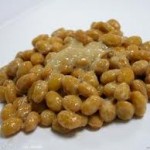
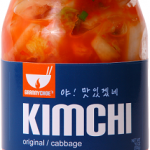
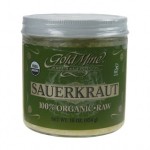

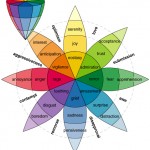


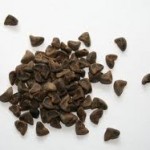
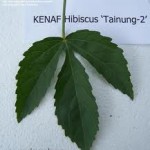

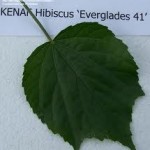
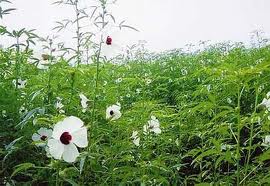

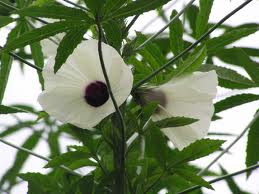
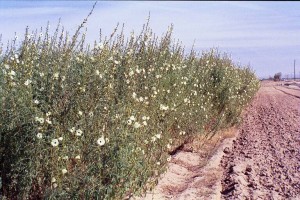
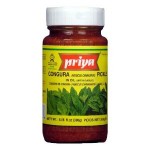
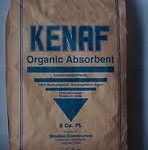

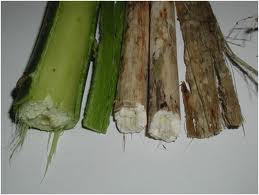 ummary: America has studied kenaf enough for 80 years. I have been knocking on heads to start businesses for 12 years now!
ummary: America has studied kenaf enough for 80 years. I have been knocking on heads to start businesses for 12 years now!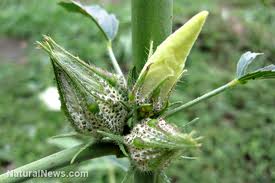

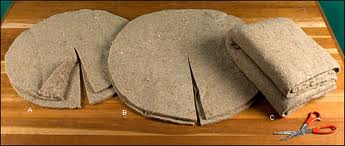
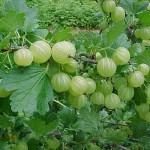
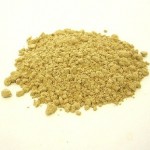
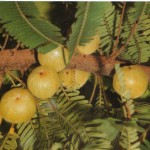
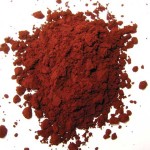
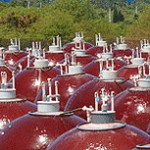



 Television – TV today keeps expanding, with big, beautiful screens and great programming variety from cable and satellite. The newer sets can be connected to your computer for the internet experience on the big screen. Movies in HD from a blu-ray player are amazing and now there’s 3D!
Television – TV today keeps expanding, with big, beautiful screens and great programming variety from cable and satellite. The newer sets can be connected to your computer for the internet experience on the big screen. Movies in HD from a blu-ray player are amazing and now there’s 3D!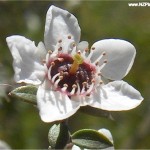
![manuka-honey[1]](http://wellnesswillpower.com/wellness/wp-content/uploads/2010/12/manuka-honey1-270x300.jpg)
